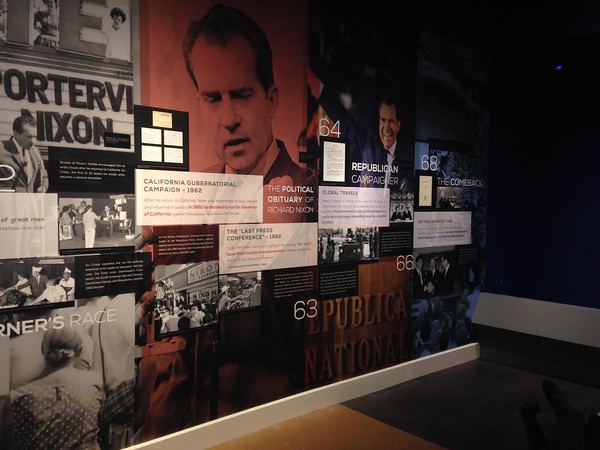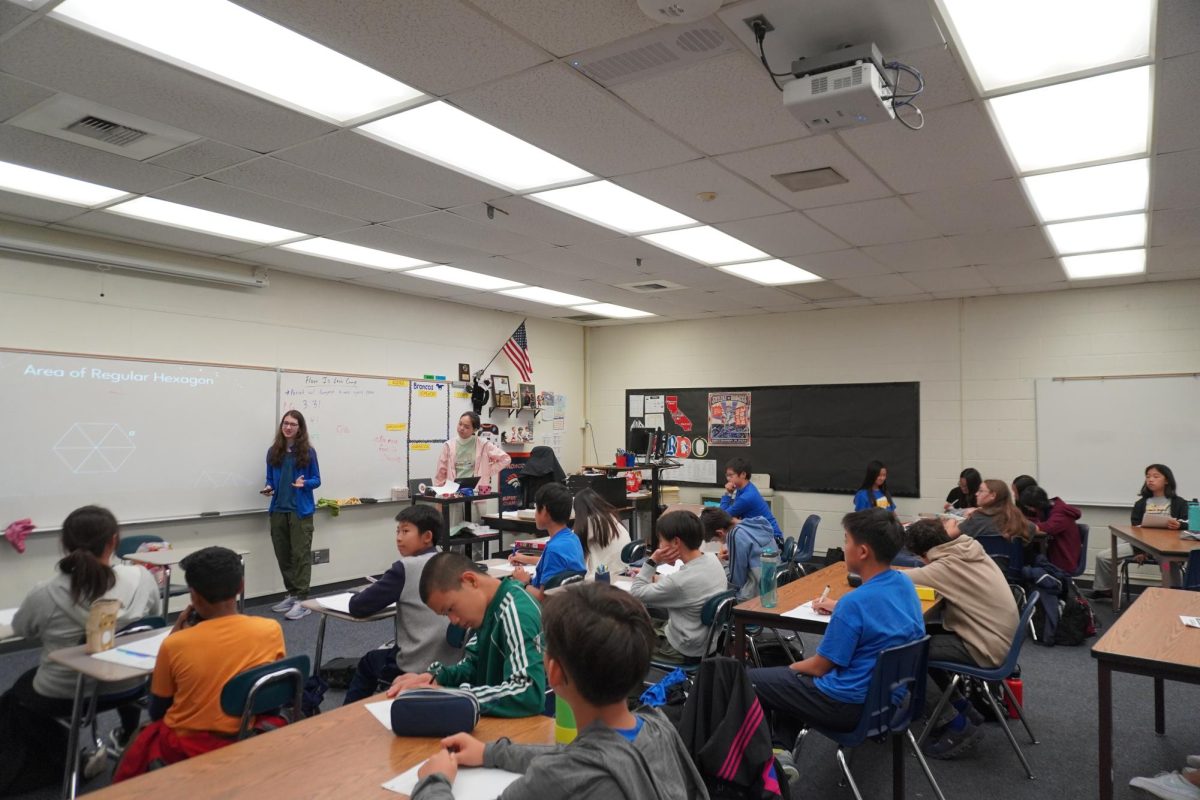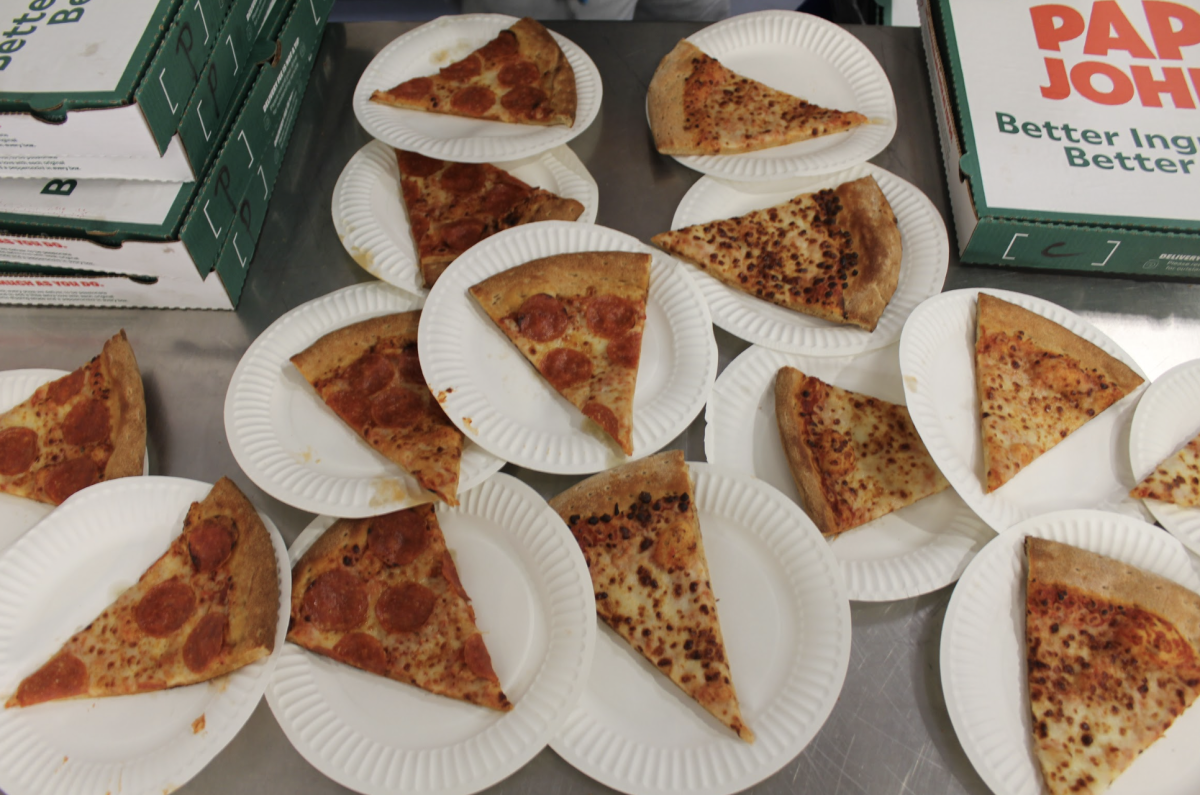
By AVA WELSH
Features Editor
Last year, UHS’s Winter Formal took place at the historical landmark most students got to know quite well while going on tours of the relics in the midst of sweating dancing in heels and ties.
The Richard Nixon Library.
However, the library we all came to know has come and gone, replaced now, with a sweep into the 21rst century and an updated new look.
When asked about the new goals for this update, the Director of Research, Programming, and Outreach Jonathan Movroydis said, “All the other presidential museums, for LBJ and others alike, have already been updated. It’s time we at the Richard Nixon library followed suit and brought the exhibits into the 21rst century.”
The gardens and central lobby haven’t changed much, however the museum exhibits many UHS students saw during the winter formal dance, are long gone having been replaced by new and improved exhibits.
The feel of the museum itself has changed as well, explained by Movroydis as the libraries attempt to create a more cinematic feel. “We wanted to engage viewers by putting them right in the middle of Nixon’s presidency right at the beginning of the exhibits,” Movroydis said, pointing to the first exhibits detailing the riots Nixon faced, “instead of starting off with his early days, which we’ve now put at the end.” Said riots included those at Selma, Birmingham, and Detroit which were depicted across the walls that lead into the reconstruction of Nixon’s own oval office, fitted with the California colours he so admired.
Blues and golds cascaded around the room, but it was the small metal box placed inside of the wall that Movroydis pointed out with great enthusiasm next.

“This is a recreation of the causality safe LBJ had in his oval office, and that Nixon kept as well, and it contained the casualty counts from the war Vietnam War.” Movroydis said, pointing out the single folder resting inside the safe, “It served Nixon as a constant reminder of how he wanted to end the war: with ‘peace and honour’.”
Turning the corner, we entered the most impressive of all the rooms: Nixon’s presidential accomplishments. Astronauts from the Apollo missions stood perched atop the high walls, memoirs from First Lady Pat Nixon’s travels sat out for display, touch screens meant to engage visitors on all of Nixon’s travels alongside photographs from said trips were scattered across the room. The new ’interactive’ side to the museum came out here as well, through the large touch screens display Nixon’s famed yellow notepads.
“We started working with the federal archives,” Movroydis explained, dragging his fingers across the touchscreens in order to pull up Nixon’s speeches, “And so we were able to get digitized copies of Nixon’s actual handwritten speeches on these yellow notepads, which he was known for using.”

Next to these was another archival addition, an exhibit called ‘Listening to History’ which featured recordings of Nixon’s conversations captured on the White House paging system.
A walk past a model of Nixon’s ‘western white house’ outfitted with his favorite view of San Clemente and we came to -debatably- the most interactive of all the exhibits: Nixon’s Tough Choices. These touchscreens take viewers through the real life decisions Nixon truly faced, and allow them through a sort of ‘choose your own adventure’ to hear the advice and reaction from his advisors and media attention alike, in order to form their own opinion for what action Nixon should have taken.

The most interesting of this exhibit, is that as well as showing and explaining Nixon’s own decision, is that it keeps track of all decisions made and shows visitors what others have chosen.
Around the hall is a collection of election memorabilia from Nixon’s landslide win in the 1972 election, where he won 49 out of 50 states, and past that is the exhibit detailing what might be considered one of the most well known happenings of Nixon’s election: The Watergate Scandal.
Next, came the cinemacy Movroydis had been explaining throughout the whole of the museum. “Starting here with the end of Nixon’s time as president, we see him stepping onto the Air Force One for the last time.” Movroydis said, “And then the time lapses from 1974 to 1913 in order to take us back to the beginning of his life, in order to reference his humble beginnings.”
This show of beginning at the end, takes visitors through Nixon’s childhood, first time meeting his future wife Thelma, and early career as a senator alongside his early interactions with the media.
When asked about the reasoning to put all of Nixon’s early life at the very end of the exhibit, Movroydis replied, “We want to shape the context of Nixon’s presidency for visitors first, engaging them in all sides of the stories they already know before bringing them back to his beginning.”
The finale of this renovation, is Nixon’s funeral. The halls darkened slightly, bringin us down from the bright lights and interactive nature of the rest of the museum, in order to play visitors-and Nixon- out with the broadcasts of his funeral and his recorded speeches.
A small finishing video -running archived clips of Nixon- shows next to the exit door, a cinematic finish to the entire exhibit and as one walks out into the light, pristine corridor right outside the museum, one can’t help but think, “Defeat doesn’t finish a man — quit does”.
Cinematic Storytellers: The New Nixon Library
October 13, 2016

0
Tags:
Donate to Sword & Shield
$180
$1000
Contributed
Our Goal
Your donation will support the student journalists of University High School. Your contribution will allow us to purchase equipment and cover our annual website hosting costs.
More to Discover













